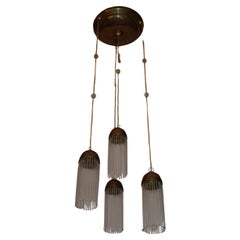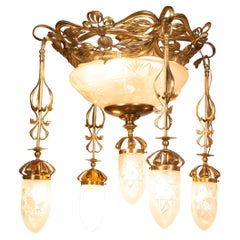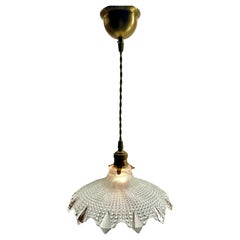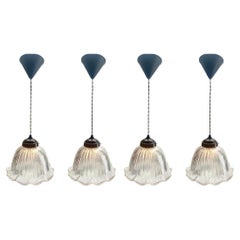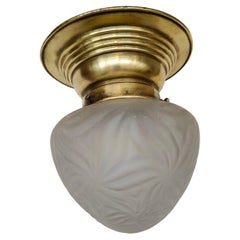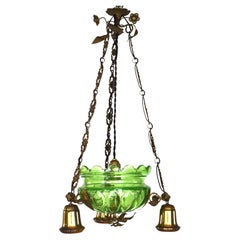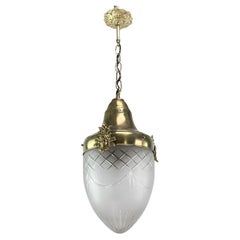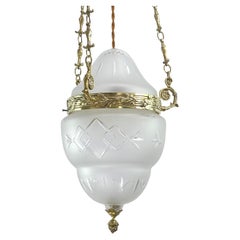Art Nouveau Ceiling
Vintage 1910s Austrian Art Nouveau Chandeliers and Pendants
Brass
Early 20th Century Italian Art Nouveau Chandeliers and Pendants
Iron
Early 20th Century European Art Nouveau Chandeliers and Pendants
Metal, Other
Vintage 1930s Belgian Art Nouveau Chandeliers and Pendants
Art Glass
Vintage 1930s Belgian Art Nouveau Chandeliers and Pendants
Art Glass, Bakelite
Early 20th Century German Art Nouveau Flush Mount
Brass
Antique Early 1900s European Art Nouveau Chandeliers and Pendants
Brass
Early 20th Century French Art Nouveau Chandeliers and Pendants
Brass, Bronze
Early 20th Century French Art Nouveau Chandeliers and Pendants
Brass, Bronze
Antique Early 1900s French Art Nouveau Chandeliers and Pendants
Copper
Antique Early 1900s French Art Nouveau Chandeliers and Pendants
Copper
Antique Early 1900s German Art Nouveau Floor Lamps
Wrought Iron
Vintage 1950s Austrian Art Nouveau Chandeliers and Pendants
Metal, Chrome
Vintage 1920s French Art Nouveau Flush Mount
Brass
Vintage 1930s Italian Art Nouveau Chandeliers and Pendants
Crystal, Brass, Wire
Vintage 1930s Belgian Art Nouveau Chandeliers and Pendants
Opaline Glass
Vintage 1930s Belgian Art Nouveau Chandeliers and Pendants
Opaline Glass
Vintage 1930s Belgian Art Nouveau Chandeliers and Pendants
Opaline Glass
Vintage 1930s Belgian Art Nouveau Chandeliers and Pendants
Opaline Glass
20th Century French Art Nouveau Chandeliers and Pendants
Metal, Brass
Vintage 1930s Belgian Art Nouveau Chandeliers and Pendants
Opaline Glass
Mid-20th Century Italian Hollywood Regency Flush Mount
Brass, Bronze
Vintage 1930s Belgian Art Nouveau Chandeliers and Pendants
Art Glass
Early 20th Century German Art Nouveau Flush Mount
Brass
Vintage 1930s Belgian Art Nouveau Chandeliers and Pendants
Art Glass, Bakelite
Vintage 1930s Belgian Art Deco Chandeliers and Pendants
Opaline Glass
Vintage 1910s Swedish Scandinavian Modern Chandeliers and Pendants
Iron
20th Century French Art Nouveau Chandeliers and Pendants
Metal
Vintage 1910s French Art Deco Chandeliers and Pendants
Wrought Iron
20th Century Italian Hollywood Regency Flush Mount
Brass, Bronze
Antique Early 19th Century Italian Art Nouveau Chandeliers and Pendants
Crystal, Wire
Antique Early 1900s Austrian Art Nouveau Chandeliers and Pendants
Art Glass
Vintage 1930s European Art Nouveau Chandeliers and Pendants
Crystal, Brass
Antique Early 19th Century Italian Art Nouveau Chandeliers and Pendants
Crystal, Brass
Early 20th Century Austrian Belle Époque Chandeliers and Pendants
Brass
Vintage 1910s French Art Nouveau Flush Mount
Bronze
Antique Early 19th Century European Art Nouveau Chandeliers and Pendants
Brass, Wire
Antique Early 1900s European Art Nouveau Chandeliers and Pendants
Brass, Wire
Vintage 1940s Italian Art Nouveau Chandeliers and Pendants
Crystal, Wire, Iron
Vintage 1930s Italian Art Nouveau Chandeliers and Pendants
Crystal, Brass, Wire
Vintage 1920s French Art Nouveau Flush Mount
Brass
Antique Late 18th Century Italian Art Nouveau Chandeliers and Pendants
Crystal, Brass, Wire
Vintage 1920s European Art Nouveau Chandeliers and Pendants
Crystal, Brass, Wire
Vintage 1920s Italian Art Nouveau Chandeliers and Pendants
Crystal, Wire, Brass
Vintage 1910s Swedish Art Nouveau Chandeliers and Pendants
Copper
Vintage 1930s European Art Nouveau Chandeliers and Pendants
Crystal, Brass, Wire
Vintage 1940s Italian Art Nouveau Chandeliers and Pendants
Crystal, Wire
Vintage 1940s European Art Nouveau Chandeliers and Pendants
Crystal, Brass, Wire
Early 20th Century Italian Art Nouveau Chandeliers and Pendants
Crystal, Brass
Antique Early 19th Century Italian Art Nouveau Chandeliers and Pendants
Crystal, Brass
Vintage 1940s European Art Nouveau Chandeliers and Pendants
Crystal, Brass, Wire
Antique 18th Century French Art Nouveau Chandeliers and Pendants
Crystal, Brass, Wire
Vintage 1930s Italian Art Nouveau Chandeliers and Pendants
Crystal, Brass, Wire
Vintage 1920s Italian Art Nouveau Chandeliers and Pendants
Crystal, Iron
Vintage 1930s Italian Art Nouveau Chandeliers and Pendants
Crystal, Brass
Antique Early 1900s French Art Nouveau Chandeliers and Pendants
Bronze
Antique Early 1900s French Art Nouveau Flush Mount
Brass
- 1
Art Nouveau Ceiling For Sale on 1stDibs
How Much is a Art Nouveau Ceiling?
Finding the Right Chandeliers-pendant-lights for You
Chandeliers — simple in form, inspired by candelabras and originally made of wood or iron — first made an appearance in early churches. For those wealthy enough to afford them for their homes in the medieval period, a chandelier's suspended lights likely exuded imminent danger, as lit candles served as the light source for fixtures of the era. Things have thankfully changed since then, and antique chandeliers and pendant lights are popular in many interiors today.
While gas lighting during the late 18th century represented an upgrade for chandeliers — and gas lamps would long inspire Danish architect and pioneering modernist lighting designer Poul Henningsen — it would eventually be replaced with the familiar electric lighting of today.
The key difference between a pendant light and a chandelier is that a pendant incorporates only a single bulb into its design. Don’t mistake this for simplicity, however. An Art Deco–styled homage to Sputnik from Murano glass artisans Giovanni Dalla Fina, with handcrafted decorative elements supported by a chrome frame, is just one stunning example of the elaborate engineering that can be incorporated into every component of a chandelier. (Note: there is more than one lighting fixture that shares its name with the iconic mid-century-era satellite — see Gino Sarfatti’s design too.)
Chandeliers have evolved over time, but their classic elegance has remained unchanged.
Not only will the right chandelier prove impressive in a given room, but it can also offer a certain sense of practicality. These fixtures can easily illuminate an entire space, while their elevated position prevents them from creating glare or straining one’s eyes.
Certain materials, like glass, can complement naturally lit settings without stealing the show. Brass, on the other hand, can introduce an alluring, warm glow. While LEDs have earned a bad reputation for their perceived harsh bluish lights and a loss of brightness over their life span, the right design choices can help harness their lighting potential and create the perfect mood. A careful approach to lighting can transform your room into a peaceful and cozy nook, ideal for napping, reading or working.
For midsize spaces, a wall light or sconce can pull the room together and get the lighting job done. Perforated steel rings underneath five bands of handspun aluminum support a rich diffusion of light within Alvar Aalto's Beehive pendant light, but if you’re looking to brighten a more modest room, perhaps a minimalist solution is what you’re after. The mid-century modern furniture designer Charlotte Perriand devised her CP-1 wall lamps in the 1960s, in which a repositioning of sheet-metal plates can redirect light as needed.
The versatility and variability of these lighting staples mean that, when it comes to finding something like the perfect chandelier, you’ll never be left hanging. From the natural world-inspired designs of the Art Nouveau era to the classic beauty of Paul Ferrante's fixtures, there is a style for every room.
With designs for pendant lights and chandeliers across eras, colors and materials, you’ll never run out of options to explore on 1stDibs — shop a collection today that includes antique Art Deco chandeliers, Stilnovo chandeliers, Baccarat chandeliers and more.
- Why did Art Nouveau end?1 Answer1stDibs ExpertAugust 8, 2024Art Nouveau ended primarily due to world events. When World War I broke out in 1914, artistic production was largely halted in order to free up materials for manufacturing equipment for the war effort. By the time the 1919 Treaty of Versailles brought about the end of the war, interest in Art Nouveau had waned. Designers and artists became interested in new forms and styles, such as Art Deco. On 1stDibs, explore a diverse assortment of Art Nouveau furniture, decorative objects, jewelry and art.
- What is Art Nouveau furniture?1 Answer1stDibs ExpertAugust 15, 2019
Art Nouveau furniture was a style of furniture that emerged at the end of the 19th century and was characterized by its complex curved lines. The curved details in the furniture were typically carved by hand and finished with lacquer. The unmistakable gloss that is associated with Art Nouveau comes from the thick coat of varnish applied to the furniture as the final step of the production process.
- 1stDibs ExpertFebruary 27, 2024Art Nouveau was influenced by a few things. The soft colors and abstract images of nature seen in Japanese woodblock prints, which arrived in large numbers in the West after open trade was forced upon Japan in the 1860s, were a major source of inspiration. Also, Pre-Raphaelite art and the Arts and Crafts and Rococo styles had an influence on Art Nouveau designers. On 1stDibs, find a wide range of Art Nouveau furniture and decorative objects.
- What is Art Nouveau jewelry?1 Answer1stDibs ExpertNovember 2, 2021Art Nouveau jewelry generally featured three main themes: flora, fauna and women. The Art Nouveau movement lasted 15 years and it reached its pinnacle in the year 1900. Art Nouveau jewelers used every “canvas” imaginable, looking beyond brooches and necklaces to belt buckles, fans, tiaras, dog collars (a type of choker necklace), pocket watches, corsages and hair combs. Multicolored gems and enamel could complete this vision better than diamonds. Enameling is most often associated with Art Nouveau jewelry, specifically plique-à-jour. Known as backless enamel, plique-à-jour allows light to come through the rear of the enamel because there is no metal backing. It creates an effect of translucence and lightness. Shop a collection of antique and vintage Art Nouveau jewelry from some of the world’s top jewelers on 1stDibs.
- Where did Art Nouveau originate?1 Answer1stDibs ExpertMay 14, 2024Art Nouveau originated in France and Great Britain, but variants materialized elsewhere. The visual vocabulary of Art Nouveau was particularly influenced by the soft colors and abstract images of nature as portrayed in Japanese art prints, which arrived in large numbers in the West after open trade was forced upon Japan in the 1860s. Impressionist artists were moved by the artistic tradition of Japanese woodblock printmaking and other modes of art and design in the East Asian country. The Art Nouveau style quickly reached a wide audience in Europe via advertising posters, book covers, illustrations and other work by such artists as Aubrey Beardsley, Henri de Toulouse-Lautrec and Alphonse Mucha. While all Art Nouveau designs share common formal elements, different countries and regions produced their own versions. Explore a selection of Art Nouveau furniture, jewelry and art on 1stDibs.
- 1stDibs ExpertAugust 15, 2019
The main difference between Art Nouveau and Art Deco is that the former is detailed and ornate, and the latter is sharp and geometrical. When the movement started at the end of the 19th century, Art Nouveau was heavily influenced by nature and the curved lines of flowers. Art Deco, which became popular in the beginning of the 20th century, was inspired by the geometric abstraction of cubism.
- 1stDibs ExpertNovember 4, 2024To identify Art Nouveau furniture, first try to locate a maker's mark on the piece. You can then use it to research the maker with the help of information published in trusted online resources. Some makers, such as Charles Rennie Mackintosh, Louis Majorelle and Émile Gallé, are well-known for their Art Nouveau furnishings. If you determine that a maker identified with Art Nouveau produced your piece, it likely reflects the movement's characteristics, especially if it was made during the late 19th or early 20th centuries. You can also look for common features of Art Nouveau furniture, such as sinuous, organic and flowing lines; forms that mimic flowers and plant life; decorative inlays and ornate carvings of natural-world motifs such as insects and animals and the use of hardwoods such as oak, mahogany and rosewood. A certified appraiser or knowledgeable antique dealer can aid you with the identification process. Shop a diverse assortment of Art Nouveau furniture on 1stDibs.
- 1stDibs ExpertApril 5, 2024No one person created the Art Nouveau movement. However, the term debuted in an 1884 article in the L'Art Moderne journal, describing the work of a collective of artists known as Les XX. As a result, some people credit the group and its founding members, James Ensor and Théo van Rysselberghe, as helping to define the movement. However, Art Nouveau was heavily informed by work that came before, including Rococo design, Pre-Raphaelite art, Japanese art and the Arts and Crafts movement. Beyond Les XX, a number of creators helped to propel the movement. Among them were Charles Rennie Mackintosh, Louis Majorelle, Émile Gallé, Antoni Gaudí and Tiffany Studios. On 1stDibs, explore a diverse assortment of Art Nouveau furniture and decorative objects.
- 1stDibs ExpertAugust 15, 2019
The Art Nouveau design movement used such materials as cast iron and steel, ceramic and glass. This style of architecture, design, art and jewelry was characterized by its use of long, sinuous lines that are reflected in nature.
- Is stained glass Art Nouveau?1 Answer1stDibs ExpertApril 5, 2022Yes, some stained glass is Art Nouveau. It was during this period that Louis Comfort Tiffany produced his famed stained glass windows and decorative objects. However, the tradition of producing stained glass traces all the way back to the Gothic period. You'll find a selection of stained glass on 1stDibs.
- 1stDibs ExpertApril 5, 2022Alphonse Mucha was a Czech painter who is one of the originators of the Art Nouveau style. His style of painting and design rose in popularity in 1895 and he produced many works, including illustrations, posters and jewelry designs. Find a variety of Alphonso Mucha art and prints on 1stDibs.
- 1stDibs ExpertAugust 20, 2024To identify Art Nouveau jewelry, first consider its overall shape and themes. Flora, fauna and female figures were the three main themes in Art Nouveau jewelry. Winged creatures, such as insects and birds, were also popular subjects. Next, examine the materials and techniques. Art Nouveau jewelers distinguished themselves from their predecessors through the use of their unorthodox materials and methods. Prior to the 20th century, artisans working with jewelry prioritized precious metals and diamonds. This was not true for Art Nouveau creators. Enameling is most often associated with Art Nouveau jewelry, specifically plique-à-jour. Known as backless enamel, plique-à-jour allows light to come through the rear of the enamel because there is no metal backing. It creates an effect of translucence and lightness. Art Nouveau jewelers also favored pearls, particularly baroque pearls, for their large size and irregular shape. However, opal was the most popular stone, and Art Nouveau jewelry was primarily set in yellow gold. If you need more help identifying your jewelry, a certified appraiser or knowledgeable dealer can assist you. On 1stDibs, find a wide range of Art Nouveau jewelry.
